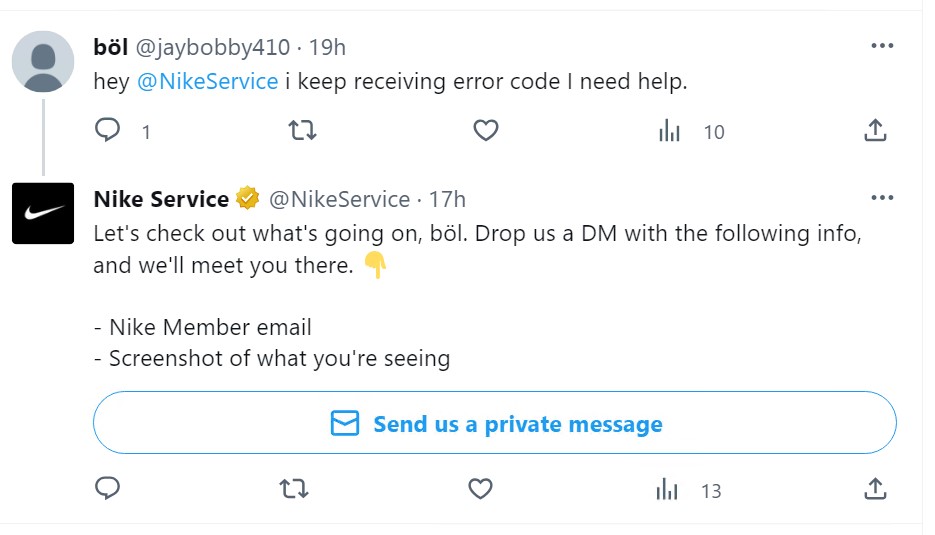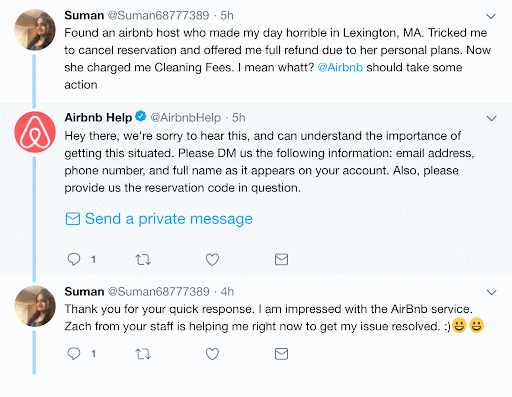We’ve all experienced frustration at poor customer service at some point, and these experiences more often than not taint our impression of the company that provided it.
That’s why prioritizing excellent customer service must be a priority focus of any business that takes its reputation seriously. With platforms like PissedConsumer.com giving access to thousands of public reviews and customer expectations on the up, failure to improve customer service when lacking can see an accumulation of customer negative reviews and complaints that seriously impact brand reputation and growth.
With this in mind, it is crucial to get customer service right. This article outlines five solid principles of successful customer service that will see you improve customer satisfaction and hopefully turn angry customers into happy advocates.
Be prompt: Don’t leave customers waiting
If you want a frustrated customer, then leave them hanging. One of the quickest ways to irritate someone who has reached out to you is to make them feel ignored. When a customer brings their issue to your attention, you must make it clear that you take their concerns seriously and that resolving their problem is a priority.

Listening and understanding, then clarifying the customer’s issue in your own words will help to put their mind at ease, and create a positive starting point from which you can work with the customer to find a quick resolution.
Empathize to connect with the customer
The next principle is showing empathy. Before diving into resolutions, CS agents need to empathize by explicitly acknowledging the customer’s feelings and perspective. This can be accomplished by asking open-ended questions to fully understand and appreciate the nature of the issue from their point of view. Convey that, however minor a problem may seem to others, only the person facing it can truly feel its impact.
All CS agents should have a solid understanding of active listening, mirroring, and other techniques that build trust and rapport, hence making troubled customers much more receptive to working with you to find a positive resolution. Developing these kinds of skills also leads to useful insights that can be put to work in preventing future frustrations.
A simple sorry can work wonders
An apology, when warranted, is another important principle of good customer service. Even for issues outside of an agent’s control, acknowledging the annoyance or inconvenience experienced by the customer with a genuine apology can go a long way. Apologies convey respect and consideration for the customer’s circumstances.

A sincere apology will see a good customer service agent put themselves in the customer’s shoes and express back to them how it must feel for them to go through the given situation.
In this way, putting themselves beside the customer and looking at the problem from the same vantage point signals a desire on the part of the CS agent to make things right and regain good standing with the customer. An apology diffuses tension, avoids the interaction being framed in a confrontational way, and instead creates goodwill and puts the conversation on the path to problem-solving.
Often, customers just want an acknowledgment that they have good reason to be upset. Saying sorry gives them this acknowledgment, and sets a positive tone for the ensuing conversation.
Never hesitate to apologize when a customer is upset, regardless of whether the company is at fault or not.
Give the customer solutions that you know will work
The next principle is providing effective solutions to negative reviews and complaints. Customers don’t just want to vent—they want resolutions; the ideal outcome is that they never want to speak to you again, as they no longer have the need to.

Your CS agents need the confidence and freedom to think laterally and devise creative solutions, to think on their feet, that proper training gives them. They must be well versed in the variety of scenarios they may find themselves in and be able to quickly refer to a broad range of options and match them to the specific needs of the customer.
Put forward adaptable solutions that match the needs of the specific case, don’t just read from a script, reciting rote policies hoping that customer will accept it and be on their way. Working to find an individualized solution shows respect, regains the customer’s trust, and restores your brand reputation. Demonstrate competence and commitment by solving their particular case, and customers will come away feeling that they participated in a constructive use of their time, rather than a waste of it.
Customer service aftercare
Lastly, don’t let the customer feel that you have cut them loose as soon as you have got them off the phone. Be pro-active about making efforts to ensure their long-term satisfaction by following up on their case until satisfaction is assured.
As I mentioned above, you want your customers to feel confident problems won’t reoccur, that problems are an outlier, not a regular occurrence. Achieve this by following up on the case within an appropriate timeframe so as to confirm that the solution provided did the trick, the results were as expected, and all concerns have been put to bed.
Persisting this way until satisfaction is achieved boosts customer satisfaction by underlining your commitment to maintaining a good client relationship, and will reward you with repeat business and positive word of mouth.
An ongoing focus on excellence
Implementing these principles will certainly bring your business improved customer service satisfaction. But adhering to them requires work, and the process is ongoing – consistent execution is crucial, so equip your teams with the knowledge, tools, and freedom to take their own initiative to respond to complaints dynamically.
Keep your processes and staff training current and relevant through continuous analysis of performance metrics centered on the customer experience, and don’t neglect to keep your eyes peeled for online reviews and social media chatter to spot and engage with issues early. Proactive continuous improvement is what I’m talking about here.
Continuous improvement based on customer feedback keeps the bar high for your customer service team, and as the human face of your company, it therefore needs to be your top priority as a business that takes growth from long-term customer loyalty seriously.



